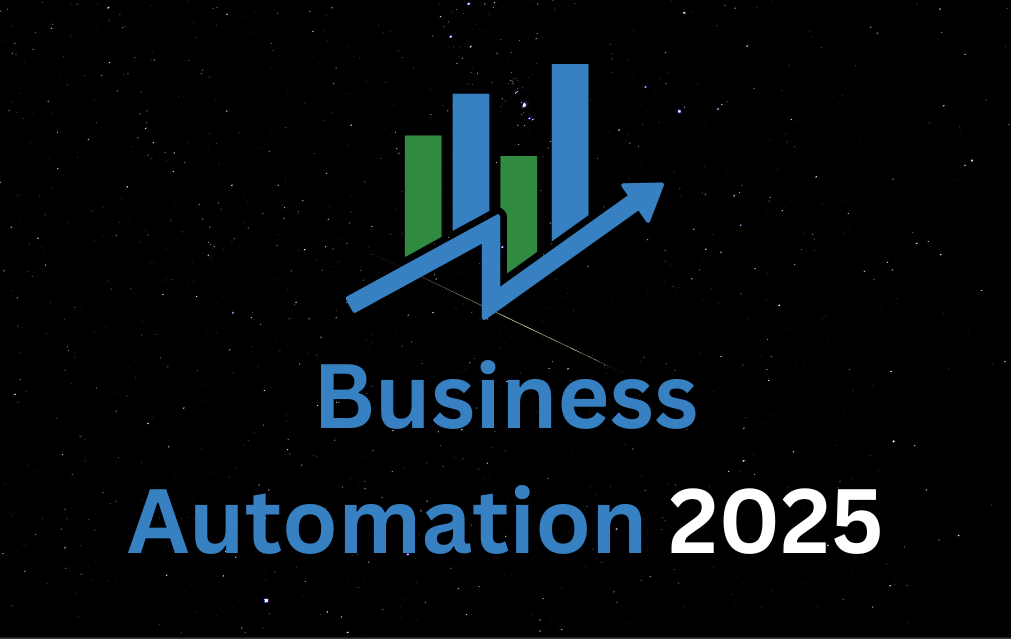Business Automation In 2025 – Introduction
In today’s fast-paced digital world, automation is the key to scaling a business efficiently. By leveraging the right tools and strategies, businesses can reduce manual workload, enhance productivity, and improve customer satisfaction. This guide explores essential automation techniques to streamline operations and maximize efficiency.
1. Why Automation is Essential for Business Growth
Automation eliminates repetitive tasks, freeing up time for strategic decision-making. Key benefits include:
- Increased Productivity: Automating workflows speeds up operations and reduces errors.
- Cost Savings: Less manual work means fewer resources are needed.
- Improved Customer Experience: Faster responses and personalized interactions boost engagement.
- Scalability: Automation allows businesses to grow without exponentially increasing workload.
2. Essential Areas to Automate
A. Customer Support & Communication
Customer service automation ensures prompt responses and better engagement. Tools like chatbots, AI-powered email responders, and automated ticketing systems can:
✔ Provide instant replies to FAQs.
✔ Route inquiries to the right department.
✔ Reduce human intervention while maintaining efficiency.
Recommended Tools:
- Chatbots: Drift, Intercom, Tidio
- AI Email Responders: ChatGPT, HubSpot, Mailchimp
- Help Desk Software: Zendesk, Freshdesk
B. Marketing & Lead Generation
Marketing automation helps attract and convert leads effortlessly. Businesses can:
✔ Schedule social media posts.
✔ Send personalized email campaigns.
✔ Track customer behavior and optimize marketing efforts.
Recommended Tools:
- Email Marketing: ActiveCampaign, ConvertKit
- Social Media Management: Buffer, Hootsuite
- Lead Capture & CRM: HubSpot, Salesforce
C. Finance & Invoicing
Financial automation simplifies accounting and cash flow management. It allows businesses to:
✔ Generate invoices automatically.
✔ Schedule recurring payments.
✔ Track expenses and analyze financial data.
Recommended Tools:
- Invoicing: QuickBooks, FreshBooks
- Expense Management: Expensify, Wave
- Payment Processing: Stripe, PayPal, Square
D. Workflow & Task Management
Efficient project management ensures smooth team collaboration. Automation tools help:
✔ Assign tasks and track progress.
✔ Set up automated reminders and deadlines.
✔ Integrate workflows across different platforms.
Recommended Tools:
- Project Management: Trello, Asana, ClickUp
- Workflow Automation: Zapier, Make (formerly Integromat)
- Collaboration: Slack, Microsoft Teams
3. Implementing Business Automation: A Step-by-Step Approach
Step 1: Identify Repetitive Tasks
Analyze daily operations to find tasks that can be automated, such as email responses, scheduling, and reporting.
Step 2: Choose the Right Automation Tools
Select platforms that integrate well with your existing systems and business model.
Step 3: Test & Optimize Workflows
Before full implementation, run small-scale tests to ensure efficiency and accuracy.
Step 4: Monitor Performance & Improve
Continuously track automation results, make adjustments, and update workflows as needed.
Conclusion
Business automation is no longer optional—it’s essential for sustainable growth. By automating key processes, companies can save time, reduce costs, and improve overall efficiency. Start integrating automation tools today and watch your business scale effortlessly.
Note: All Of Our Articles Are Written By Artificial Intelligence And Reviewed By Researchers.
